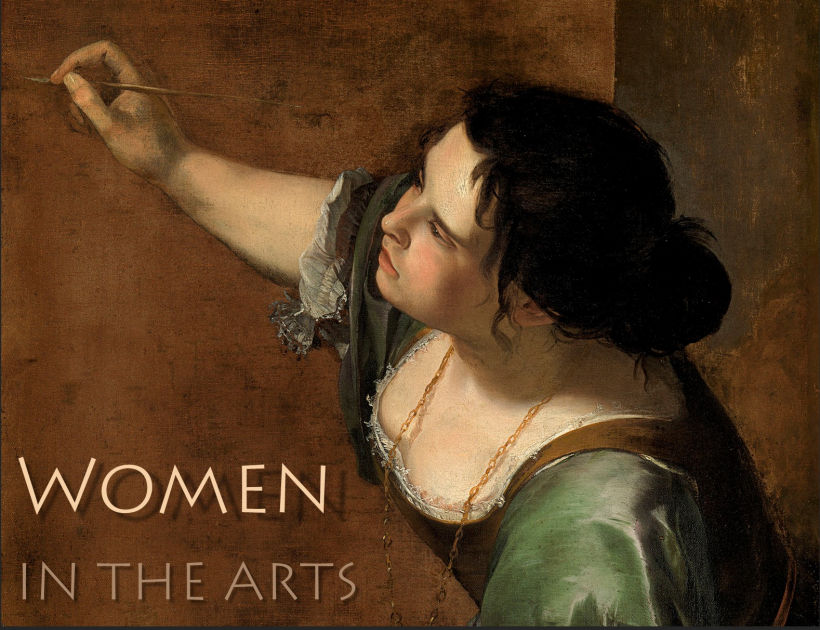Here are brief bios of the artists, composers, and writers considered in the class, listed in order of birth.
All the specific biographies of women featured in the course are collected in the
BIOS link on the syllabus page.
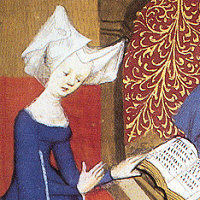 |
Christine de Pizan, 13641430. Italian-born French poet.
Born in Venice, Christine moved to Paris as a child, when her father became astrologer to the king. She married a court official, then had to support herself by her writing after he died. She wrote poetry and prose in most genres, and is credited as being the first female professional writer of modern times.
|
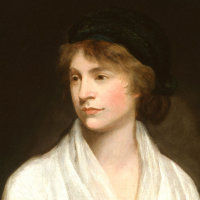 |
Mary Wollstonecraft Godwin, 175997. English writer.
Mary Wollstonecraft, wife of the anarchist philosopher William Godwin and mother of the future Mary Shelley, was one of the most original women of her age, breaking numerous conventions of decorum. She was a first-hand witness of the French Revolution, and published an analysis of its moral significance. Her most important work for subsequent generations, however, was A Vindication of the Rights of Woman (1792), a foundation document of feminism.
|
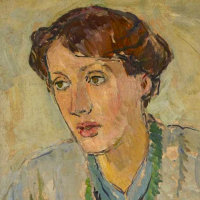 |
Virginia Woolf, 18821941. English novelist.
"Virginia Woolf (née Stephen) is considered one of the most important modernist 20th-century authors and a pioneer in the use of stream of consciousness as a narrative device." [Wikipedia] Most of her novels, which include Mrs Dalloway (1925) and To the Lighthouse (1927), were published by the Hogarth Press, which she founded with her husband, the philosopher Leonard Woolf. Together with her sister, painter Vanessa Bell, the three were core members of the Bloomsbury Group. She suffered from bipolar disorder most of her life, and drowned herself at the age of 59.
|
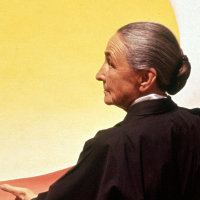 |
Georgia O'Keeffe, 18871986. American painter.
Her near-abstract enlargements of flower and plant forms established her as a pioneer of American modernism. She settled in New Mexico for the last 40 years of her life, adding desert landscapes and bleached skulls to her repertoire of forms that she would revisit in numerous variations.
|
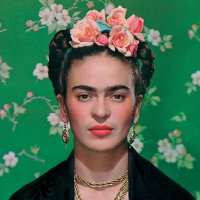 |
Frida Kahlo, 190754. Mexican painter.
Although she had successful exhibitions in Paris and New York in the late 1930s, Kahlo's fame was largely overshadowed in her lifetime by that of her much older husband Diego Rivera. Since her death, however, interest has grown exponentially in the self-revealing nature of her work, which unites traditional Mexican qualities to a touch of Surrealism.
|
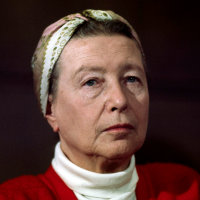 |
Simone de Beauvoir, 190846. French writer.
Simone Lucie Ernestine Marie Bertrand de Beauvoir was a French novelist and essayist, whose book The Second Sex (1949) is a foundation feminist text. She was also closely associated with the Existentialist philosophy of Jean-Pau Sartre, her lifelong (though far from exclusive) companion.
|
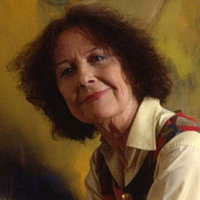 |
Dorothea Tanning, 19102012. American painter.
Tanning's earlier work was stongly influenced by Surrealism, which led her to meet and marry Max Ernst, one of the originators of that style. Campared to his, her work tends to be more highly colored and more distinctly autobiogaphical.
|
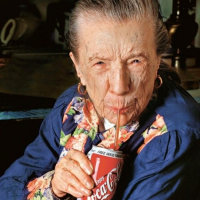 |
Louise Bourgeois, 19112010. French-American sculptor.
Bourgeois was born and trained in France, but moved to New York in 1938. It was only there that she turned to sculpture, the art form in which she is best known, working in a variety of media and every scale from intimate the monumental. Although her work is abstract, it often has human references.
|
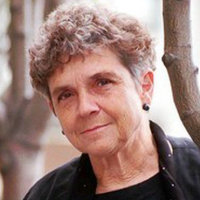 |
Adrienne Rich, 19292012. American poet.
Born in Baltimore, Rich moved from a succinct formalism in her earlier work to a freer style that addressed feminist and lesbian topics. She was widely read and honored with many awards, two of which she refused as an expression of her social and political activism.
|
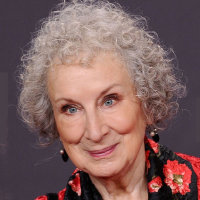 |
Margaret Atwood, 1930 . Canadian novelist and poet.
Atwood's novels such as The Handmaid's Tale (1986) and Alias Grace (1996), addressing issues issues such as gender, identity, and the environment, have won her numerous prizes (including the Booker Award, twice), been adapted to film and television, and gained her a wide readership.
|
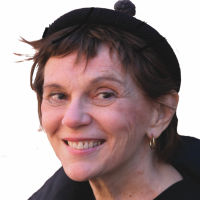 |
Mary Beth Edelson, 19332021. American artist.
Edelson began painting portraits of mothers and children in a style influenced by Post-Impressionism, but around 1970 she shifted to address explicitly feminist themes, turning to collage and other media. Her best-known work (1972) is a parody of Leonardo's Last Supper with the heads replaced by photos of contemporary female American artists.
|
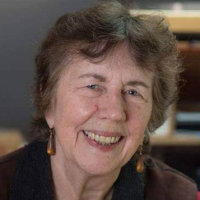 |
Joan Tower, 1938 . American composer.
Tower began her career as a pianist, especially with the NY ensemble Da Capo Players, which she co-founded. Simultaneously, she was establishing a reputation as a composer, including a series of six works called Fanfare for the Uncommon Woman, each honoring a different American Woman in music.
|
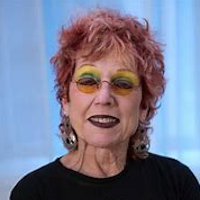 |
Judy Chicago, 1939 . American artist.
Judy Chicago was born Judith Sylvia Cohen, in a long line of rabbis. Her father, though, was a labor organizer, and there a strong thread of activism runs through her own feminist work. She is most famous for The Dinner Party (1979), a multi-media celebration of powerful women throughout history.
|
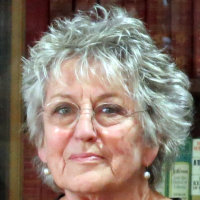 |
Germaine Greer, 1939 . Australian writer.
Born in Australia, Greer has taught at English universities since 1964. Her 1970 book The Female Eunuch became an instant feminist manifesto. She insists that her activism is not about equality with men, which she considers limiting, but "the freedom of women to define their own values, order their own priorities and decide their own fate".
|
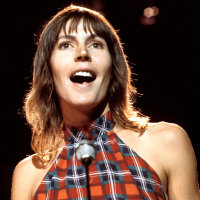 |
Helen Reddy, 19412020. Australian singer.
The Australian singer's career took off in the US in the 1970s, with 15 of her records reaching the Billboard top 40. Her 1971 hit, "I am woman, hear me roar," became a kind of feminist anthem.
|
 |
Barbara Kruger, 1945 . American artist.
Immediately recognizable for her use of advertising slogans and photo-collage in black, white, and red, Kruger has been a leading voice in feminist activism since the 1970s.
|
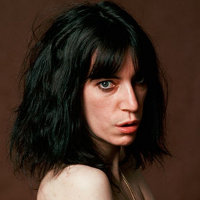 |
Patti Smith, 1946 . American singer and composer.
Smith has been called the "poet laureate of punk rock." She burst on the scene in 1975 with her debut album Horses. Her most famous song, "Bacause the Night" (1978), was co-writen with Bruce Springsteen. She was inducted into the Rock and Roll Hall of Fame in 2007. She was the long-term partner of photographer Robert Mapplethorpe.
|
 |
Cindy Sherman, 1964 . American photographic artist.
Sherman's work consists primarily of photographic self-portraits, depicting herself in many different contexts and as various imagined characters. Her series of 70 Untitled Film Stills (197780) were black-and-white take-offs of B-movie films noirs. Later, she moved into large-format color photographs including detailed props and high-chroma color schemes.
|
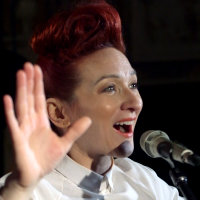 |
Shara Nova, 1974 . American singer and composer.
Formerly writing and performing under her then-married name of Worden, Nova is both a performer and composer, addressing feminist themes. Her music straddles the boundaries of pop and classical, including works for instrumental ensembles, choirs, and a one-act opera.
|







































